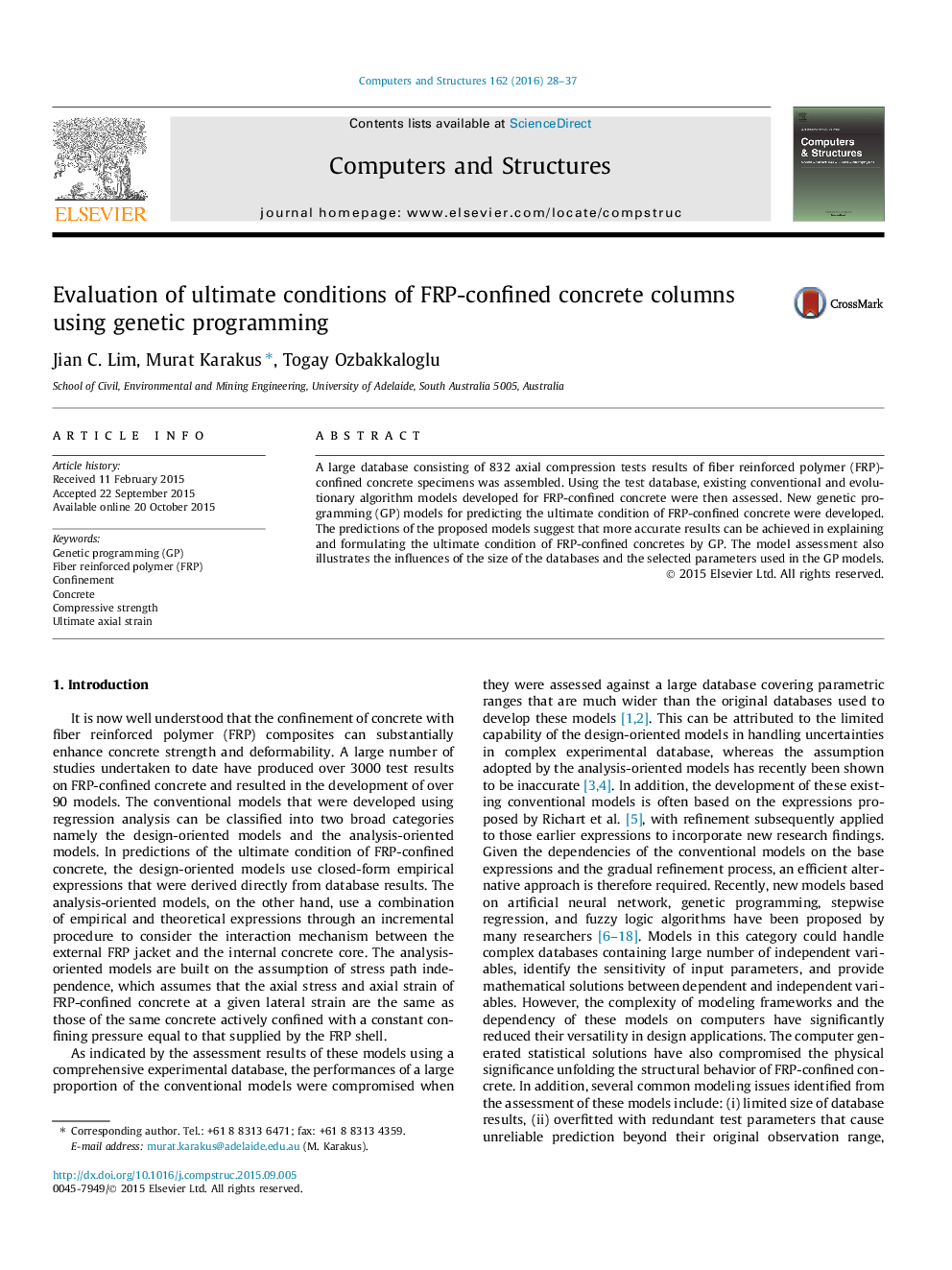| Article ID | Journal | Published Year | Pages | File Type |
|---|---|---|---|---|
| 510019 | Computers & Structures | 2016 | 10 Pages |
•A large experimental test database of FRP-confined concrete tests was assembled.•Existing conventional and evolutionary algorithm models were then assessed using the database.•A new generic programming model for FRP-confined concrete was developed.•Proposed model provides accurate predictions of the ultimate conditions of FRP-confined concrete.
A large database consisting of 832 axial compression tests results of fiber reinforced polymer (FRP)-confined concrete specimens was assembled. Using the test database, existing conventional and evolutionary algorithm models developed for FRP-confined concrete were then assessed. New genetic programming (GP) models for predicting the ultimate condition of FRP-confined concrete were developed. The predictions of the proposed models suggest that more accurate results can be achieved in explaining and formulating the ultimate condition of FRP-confined concretes by GP. The model assessment also illustrates the influences of the size of the databases and the selected parameters used in the GP models.
